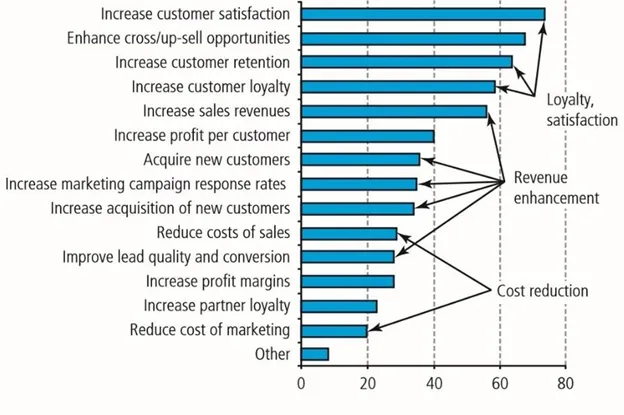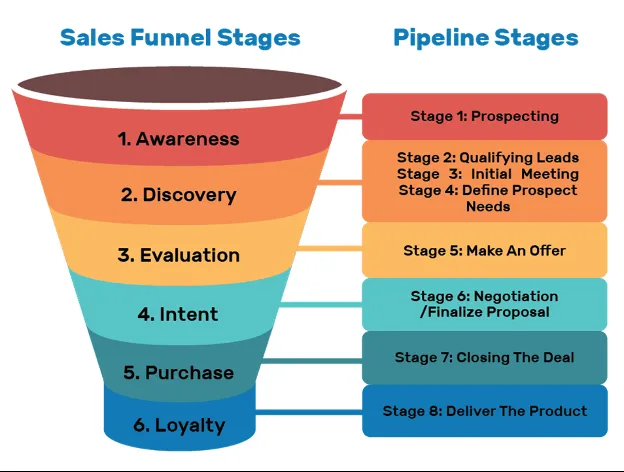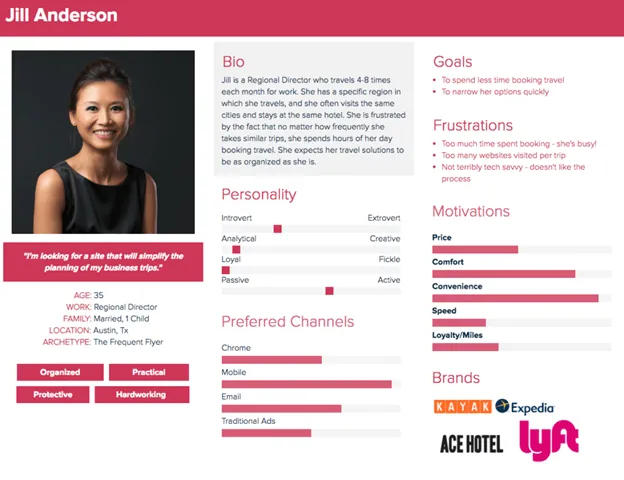Did you know that companies that use CRM see a 29% increase in sales? Sales productivity also rose by 34% thanks to customer relationship management software. It’s not hard to see how CRM impacts sales and the business as a whole. A good CRM and CRM strategy helps you manage customer data, track interactions, and identify potential sales opportunities. The software is essential for businesses of all sizes that want to grow by maintaining good customer relationships.
By understanding your target audience and collecting data about them, you can develop strategies for improving the customer experience. This article will guide you in creating a CRM strategy for your business.
Table of Contents
What Is CRM And What Are Its Benefits?
Let’s start with understanding what CRM is.
CRM (Customer Relationship Management) is a strategy, methodology, or software system designed to manage and improve a company’s interactions with its customers and prospects. CRM aims to streamline sales, marketing, and customer support processes while enhancing customer satisfaction and loyalty.
The benefits of CRM include:
1. Improved customer management
CRM systems enable businesses to store and manage customer information, including contact details, purchase history, and communication records. This centralized database helps your team better understand customer needs and preferences, leading to more personalized interactions.
2. Enhanced communication and collaboration
CRM systems facilitate seamless communication and cooperation between different teams. This ensures everyone has access to the same customer information, promoting a consistent and coordinated approach to customer service.
3. Streamlined sales process
CRM systems help sales teams manage leads, track opportunities, and monitor sales performance. They can automate routine tasks, identify potential deals, and provide insights that help close sales more efficiently.
4. Better marketing strategies
CRM software can track customer behavior and preferences, enabling marketers to create targeted and personalized campaigns.
5. Data-driven decision-making
CRM software collects and analyzes a wealth of customer data, enabling businesses to make informed decisions. This data can provide insights into customer behavior, product performance, and market trends, helping you make better strategic choices.
6. Enhanced productivity
By automating routine tasks and centralizing customer data, CRM systems save time and effort for sales, marketing, and support teams. This increases productivity and allows employees to focus on more value-added activities.
What Is a CRM Strategy?
A CRM strategy is the plan that your company will use to manage and interact with customers. It can include the tools and processes you will use and the goals you hope to achieve.
For example, you can include details about how you’ll use the software and collect, process, and analyze customer data. You should also outline how the company will use the information it gathers to improve customer service and increase sales.
A CRM strategy helps businesses develop and maintain customer relationships by providing a more personalized and efficient experience. It uses customer data to create data-driven decisions, which lead to improved customer satisfaction, increased sales and revenue, and an all-around better customer service experience.
6 Steps To Build A Successful CRM Strategy
A well-designed CRM system can do wonders for your business. It increases sales and improves customer retention rates. But this will work only if it’s properly configured and used correctly.
Not sure where to start? Here are six steps to creating a CRM strategy that will work for your business.
1. Define Your Business Goals
It’s crucial to clearly understand what you hope to achieve with your CRM strategy. Defining your goals upfront will help you select the right CRM system and ensure that the system meets your needs.
Your business goals should be specific, measurable, attainable, relevant, and time-bound. They should also be consistent with your company’s mission and vision.
Some business goals that could be used to create a CRM strategy include increasing customer retention, boosting customer loyalty, improving the average purchase value, and increasing the number of new customers.
Here are more CRM goals, from most to least significant.

Source: www.researchgate.net
You may divide each goal into more manageable objectives of work. For example, suppose one of the business goals is to increase customer retention. In that case, some objectives might be to increase the number of customers who return to your store within 30 days or increase the percentage of customers who make a second purchase within six months.
It’s also crucial to identify your target audience. Who are you trying to reach with your CRM strategy? Are you targeting existing customers, prospective customers, or both? This will help you determine strategies and features to include in your CRM system.
Also, consider your customer base’s needs. This includes understanding what they want, their preferred modes of communication, and what information/product they are interested in.
Example
If you’re targeting people who want to start a business, then you know they’re likely to search for a specific LLC, how Limited Liability Companies compare to other corporations, how to register an LLC, and so on. With this information, you’ll know what content you need to create to build customer relationships with this audience.
Similarly, brands like Beardbrand allow customers to customize their product bundles. That helps the brand understand consumer needs, which helps develop a more accurate CRM strategy.

By understanding the needs and wants of your customer base, you can improve customer satisfaction and loyalty.
2. Map Your Sales Pipeline
Creating an effective CRM strategy starts with mapping your sales pipeline. A sales pipeline is a company’s process to move potential customers through awareness, interest, consideration, and purchase stages.
Mapping a sales pipeline is critical to start a business on the right foot. It helps you identify any bottlenecks or problem areas in your sales process so that you can make the necessary adjustments.
Also, it allows you to track your progress and ensure you make the most of your opportunities.
To map your sales pipeline, define the stages your potential customers will go through from start to finish. This will vary depending on your industry and product/service, but typical stages include Awareness, Interest, Consideration, and Purchase.
For instance, the following sales pipeline has additional stages, such as intent and evaluation.

Source
Then, you plot out the specific tasks needed at each stage for a potential customer to move on to the next stage. For example, at the awareness stage, a task might be creating targeted content that speaks to the needs of your ideal customer. At the Interest stage, a task might be sending out emails with helpful information about your product or service.
By plotting out these tasks, you can ensure that each potential customer receives the attention and content they need to convert into a paying customer.
Also, keep an eye out for problematic areas. Examine, for instance, if customers are spending too much time in a particular stage. This can highlight bottlenecks you can resolve to streamline the sales pipeline and accelerate conversions.
3. Involve Your Team
Your company’s CRM strategy is only as good as the team helping to create and implement it. You can get the most out of your CRM strategy by involving your team in decision-making. This means involving them in everything from deciding what type of CRM is best for your business to how to implement the CRM strategy.
After all, they’re the ones who will be using the CRM daily. So sit down with them and find out what they need from the strategy. What features would make their job easier? What sales processes would they like to see automated? The more input you have from your team, the better your chance of creating a CRM strategy that works.
Hold a meeting and ask for their feedback. You can also send out a survey or questionnaire to understand what your team wants and needs from a CRM strategy.
Whichever approach you choose, communicate the CRM strategy’s goals and solicit feedback throughout the process.
Also, ensure you create training to familiarize your team with how to use the CRM and their responsibilities. Your team will be able to work smarter, not harder, and they’ll get you the results you need.
4. Focus on Personalized Customer Experience
For a CRM strategy to be effective, it must do more than maintain client contact details and purchase history. It needs to help you deliver a personalized customer experience at every buyer journey stage. As a result, you will develop stronger client relationships and expand your company by focusing on personalization.
You must put your customer first at every step of their journey. So, start by defining your customer journey.
- What does the average customer’s journey look like?
- What are the key touchpoints?
- What are the pain points?
And, most importantly, what can you do to improve the journey?
Once you clearly understand the entire customer journey, you can create customer profiles. Customer profiles will help you understand your ideal customers, their needs, key touchpoints, and how you can best meet them. Here is a sample of what a customer profile may look like.

The best way to collect data about your customer is to survey them. You can use various methods to survey customers, including social media, emails, or phone surveys.
With all this data, it becomes easier to tailor your services to each customer’s needs. For example, you’ll know the exact type of content to include in your marketing emails, retargeting ads, and other similar marketing campaign collateral for each customer.
Ensure consistency across all touchpoints. It is a good idea to create a style guide to help your team ensure each customer interaction is unique, consistent, and tailored to their needs.
Moreover, you can use CRM data like past purchases to personalize product recommendations. Even keeping track of customer interactions can help you deliver more personalized customer support. All this results in an enhanced customer experience.
5. Invest in CRM Software
A CRM software solution aims to help businesses manage their customer data. It allows companies to track customer interactions and communications and store customer data.
Finding the right CRM software for your company may be challenging. However, it is possible if you take the time to assess your requirements and compare them to the features and capabilities of each platform. Salesforce, HubSpot Sales, and ZohoCRM are all great options worth considering.
What To Consider While Choosing CRM Software?
Here are some elements to consider while picking up CRM software:
- Your goals: This will help you narrow down the massive selection of CRM software solutions on the market and choose the best suited for your needs. So, sit down with your team and discuss your goals, then look for a CRM that can help you achieve those goals.
- Integrations: Look for a CRM solution that integrates with your existing stack. This is crucial in ensuring all your tools work together to give you complete visibility.
- Scalability: The ideal CRM solution will adapt to the changing needs of your business. As your brand grows from a small business to an enterprise, you’ll want a tool that can adapt to that change. This is essential because purchasing a new system, transferring customer data, and retraining your staff can be expensive and very inconvenient.
- Ease of use: Ideally, your employees should be up and running with the CRM system in no time. Therefore, ensure the CRM tool you pick does not have a steep learning curve. The provider should also offer sufficient learning materials and support to help your employees get the ball rolling quickly.
- Price: Consider the cost of the CRM solution. Our advice here is not to go for the cheapest option. Instead, look for the platform giving you the best value based on the features you want.
You’ll also want to consider the type of products or services you offer. For example, businesses that need a simple solution with call functions for sales enablement may find Freshworks a good fit.
Meanwhile, a platform like Salesforce is ideal for businesses that want more functionality and scalability for both marketing and sales teams.
6. Track Your Performance and Refine The Strategy
Keeping track of your performance and refining your CRM strategy regularly is essential. It ensures your CRM strategy stays aligned with your needs and gives you the best ROI.
Track metrics like sales figures, customer satisfaction, and retention rates over time, and make adjustments to ensure that you’re always moving in the right direction.
Also, pay attention to how your team uses the system and whether or not they’re achieving their goals. Also, if something needs to be fixed, feel free to scrap it and start over.
For example, Teamgate lets you analyze previous performance and goals. It offers valuable insights that help evaluate any improvements required.
There are many different aspects of tracking performance, but we will focus on two main ones: sales data and customer feedback.
Sales data is a great way to track progress because it provides insight into whether your efforts result in conversions. If you see a decline in sales, it may be time to take a closer look at your approach and make some changes. Additionally, if you see an increase in sales, it can help you identify what is working well so that you can continue doing more of the same.
Customer feedback is also essential for tracking performance. After all, if customers are unhappy with your product or service, they are unlikely to continue doing business with you. As such, it is crucial to regularly collect customer feedback and use it to improve your offering. There are several ways to collect customer feedback, such as surveys, interviews, and focus groups.
CRM Strategy Examples
Here are a few examples of a CRM strategy for every business,
1. Creating content that adds value
As most people search for things they require online, you can increase your visibility by writing content that ranks on search engines. Moreover, high-quality content that adds value to potential customers can help nurture them throughout the sales funnel, from awareness to consideration and decision stages. You can guide prospects toward becoming paying customers by providing valuable information at each stage.
2. Offering rewards to loyal customers
With the help of loyalty programs, you can reward customers for their continued patronage by incentivizing them to keep using your products or services. It can be in the form of offers, discounts and other perks. This can lead to higher customer retention rates, which are often more cost-effective than acquiring new customers. A lot of businesses use this strategy and it works in their favor.
Get Ready To Create An Effective CRM Strategy
CRM strategies are essential for modern businesses. They help you manage customer data, track interactions, and identify potential sales opportunities.
These strategies could involve changes to your marketing approach, sales process, or customer service procedures. However, whatever changes you make, be sure to test them out before you implement them on a larger scale.
By defining your business goals, involving your team, and mapping your sales pipeline, you can ensure that your CRM strategy aligns with your overall objectives.
From there, choosing the right CRM platform is crucial—select one that offers the features and functionality you need to support your specific use case. Personalizing the customer experience and monitoring your progress is critical to developing a successful CRM strategy.
Once you’ve done that, setting up your strategy will be a breeze. By understanding your customers’ needs and implementing processes that meet them, you can keep them happy and coming back for more.
FAQs
A CRM strategy is a plan of action for managing customer relationships to maximize customer loyalty & satisfaction. It includes elements such as customer segmentation, customer engagement, customer retention, customer service, & customer feedback.
The best CRM strategy is one that is tailored to the specific needs of your business. Some key components of a successful CRM strategy include understanding your customers’ needs, staying organized & efficient, & using automation.
You can build a CRM strategy by defining business goals, mapping your sales pipeline, involving your team, focusing on personalized customer experience, investing in CRM software, tracking your performance & refining the strategy.

Leave a Reply